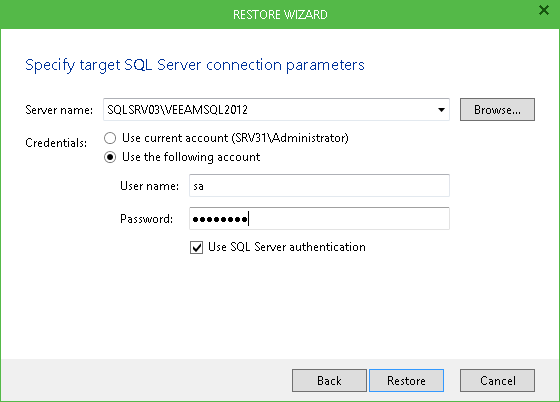Specify SQL server (if restoring all server databases) or instance (if restoring instance databases) where to restore the databases. Target SQL server must be of the same or later version as the original server. For example, SQL Server 2008 database can be restored to SQL Server 2008 or 2012, but cannot be restored to SQL Server 2005. Also, consider that database in mirror mode cannot be used as a target.
- If you are restoring all databases of a server, having selected SQL Server node in the navigation tree, consider that databases will be restored to a single instance on that server. The original database names will be used for restored databases.
- Specify the account to be used for connection with the target SQL Server. You can use the current account (under which you are running Veeam Explorer), or specify another account and enter its password.
- You can select to Use SQL Server authentication; if this check box is not selected, Windows authentication will be used. Remember that the account used to access target SQL Server must be assigned the sysadmin role on that server.

If the connection to the Windows machine hosting the target SQL server uses the same credentials, you can click Restore. Otherwise, supply server connection credentials.
|
Consider the following:
|
|
To be able to copy transaction logs to the target server for further replay, the account you specify for server connection (that is, credentials to connect to Windows server) should be granted sufficient permissions to access the administrative share on that machine (e.g., \\myserver\C$): Read and Write are minimal required, Full Control recommended. See the Required Permissions section for information. |







